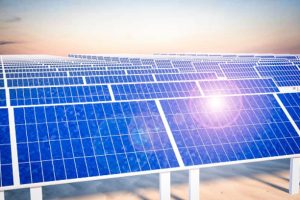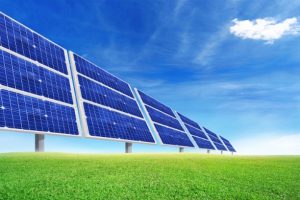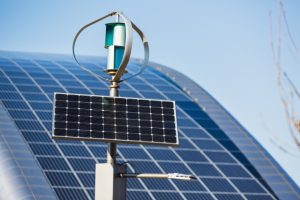The greatest barrier to solar energy implementation is the high initial cost and the lack of widespread infrastructure. Despite the potential for long-term cost savings and environmental benefits, the upfront investment required and the need for comprehensive distribution networks hinder the widespread adoption of solar energy.
Solar energy, a promising alternative to traditional fossil fuels, holds the potential to revolutionize the way we power our world. However, the initial cost of equipment and installation, coupled with the absence of a fully developed infrastructure, present significant obstacles to its widespread implementation.

This form of renewable energy offers numerous advantages, including a reduced carbon footprint and long-term cost-effectiveness, but the barriers to entry remain a challenge. Overcoming these obstacles will require innovative solutions and strategic investments to make solar energy more accessible and practical for individuals and businesses alike.
Cost
The cost of solar energy implementation remains the greatest barrier due to high initial investment and maintenance expenses.
Solar energy is a promising solution for a sustainable future. However, various challenges hinder its widespread implementation. One of the greatest barriers to solar energy adoption is the cost associated with its installation, maintenance, and operation.
High Upfront Expenses
The high upfront expenses involved in installing a solar energy system deter many individuals and businesses from pursuing this renewable energy source. The initial cost of purchasing and installing solar panels, inverters, and associated equipment can be significant. These expenses can pose a financial burden, especially for households and organizations with limited resources. However, it is crucial to consider the long-term benefits and savings that solar energy can provide.
Although the installation cost might appear steep at first, it is important to note that several financial incentives and financing options are available to make solar energy more affordable. Governments and utility companies often offer grants, tax credits, and subsidies to encourage the adoption of solar energy. Additionally, many financial institutions provide loans or leasing options with attractive terms to help mitigate the upfront expenses.
Maintenance And Operational Costs
Another significant factor that contributes to the cost barrier is the maintenance and operational expenses associated with solar energy systems. While solar panels are known for their durability and low maintenance requirements, regular inspections, cleaning, and repairs are necessary to ensure their optimal performance. Moreover, the lifespan of solar panels typically ranges from 25 to 30 years, and during this period, replacements or upgrades may be necessary.
Additionally, operational costs such as inverter replacements, battery storage systems, and monitoring equipment should also be considered. These ongoing expenses can accumulate over time, especially in larger installations. However, advancements in technology have led to the development of more efficient and durable components, thereby reducing maintenance and operational costs in the long run.
Efficient utilization of solar energy resources involves regular monitoring and management. Proper system maintenance, including performance monitoring and cleaning, can enhance the longevity and efficiency of the solar panels, ensuring optimum energy generation. This can be achieved through scheduled maintenance routines and the use of specialized cleaning tools and techniques.
In conclusion, although cost remains a significant barrier to solar energy implementation, it is crucial to consider the long-term benefits and savings that solar energy can provide. With the right financial incentives, efficient system design, and effective maintenance strategies, the cost barrier can be minimized, making solar energy a viable solution for a sustainable future.

Infrastructure
One of the greatest barriers to solar energy implementation is the infrastructure required to harness and distribute solar power effectively. The challenges associated with infrastructure can significantly impede the widespread adoption of solar energy as a primary source of power.
Lack Of Necessary Grid Connections
The lack of necessary grid connections presents a substantial obstacle to the seamless integration of solar energy into existing power systems. Many remote areas where solar energy could be most beneficial often lack the essential grid connections needed to transmit the generated energy to end-users. This connectivity gap limits the potential reach and effectiveness of solar energy implementation.
Insufficient Storage Capabilities
Insufficient storage capabilities also pose a significant barrier to the widespread adoption of solar energy. Without adequate storage solutions, the intermittency of solar power generation can lead to energy wastage and reliance on backup conventional power sources during periods of low solar input. This limitation hinders the reliability and continuous availability of solar energy, impacting its viability as a primary energy source.
Policy And Regulation
Solar energy implementation faces numerous barriers, with policy and regulation being a prominent obstacle. The lack of consistent government support and cumbersome permitting processes hinder the widespread adoption of solar energy.
Inconsistent Government Support
The inconsistency in government support for solar energy initiatives creates uncertainty and reluctance among businesses and homeowners to invest in solar technology. Manufacturers and consumers alike struggle to make long-term decisions without a stable and predictable policy framework.
Complex Permitting Processes
The complex and time-consuming permitting processes for solar installations pose a significant impediment to solar energy implementation. The bureaucratic red tape and varying regulations across different regions lead to delays and increased costs, discouraging many potential adopters.
Public Perception
The greatest barrier to solar energy implementation lies in the public perception surrounding it. Negative perceptions and misconceptions about solar energy hinder its widespread adoption, preventing its full potential from being realized. Educating the public and addressing these concerns are crucial steps towards overcoming this barrier and promoting solar energy as a viable and sustainable solution for a cleaner future.
Public perception plays a significant role in determining the success of solar energy implementation. It encompasses the beliefs, opinions, and attitudes that individuals hold towards solar power. The lack of understanding, misconceptions, and a general lack of awareness can hinder progress in transitioning to a renewable energy source. In this section, we will explore the two primary factors contributing to the barrier of public perception in solar energy adoption: misconceptions about solar power and lack of awareness.
Misconceptions About Solar Power
Misleading information and misconceptions about solar power often lead to skepticism among the public. Addressing these misconceptions is essential to dispelling doubts and fostering a positive perception.
- Solar power is expensive and not cost-effective.
- The efficiency of solar panels is insufficient to provide adequate power.
- Solar power is unreliable and does not work during cloudy or rainy days.
- Installing solar panels is complicated and requires constant maintenance.
In reality, solar power has become increasingly affordable in recent years, with declining installation costs and government incentives. Technological advancements have also improved the efficiency of solar panels, allowing for higher energy production. Additionally, solar energy systems can store excess energy for use during cloudy or rainy periods. Furthermore, modern solar panels are designed to be low-maintenance, offering reliable performance for many years.
Lack Of Awareness
Lack of awareness is another significant obstacle hindering the implementation of solar energy. Many individuals simply do not have enough information about solar power and its benefits. Without proper knowledge, they may underestimate the capabilities and potential of renewable energy sources. To bridge this gap, efforts must be made to raise awareness through education and outreach programs.
Government initiatives, community-based campaigns, and informative resources can play a crucial role in educating the public about solar power. These efforts can highlight the environmental benefits, cost savings, and long-term advantages of transitioning to renewable energy sources. By increasing awareness, individuals can make informed decisions and actively contribute towards a cleaner and more sustainable future.
Technological Limitations
Solar energy has enormous potential to revolutionize our world by providing clean and sustainable power. However, the widespread implementation of solar energy faces several technological limitations that hinder its progress. This section will discuss two significant barriers that need to be overcome for efficient adoption of solar energy: efficiency and reliability challenges and limited availability of key components.
Efficiency And Reliability Challenges
The efficiency and reliability of solar energy systems are vital factors that influence their practicality and cost-effectiveness. Currently, one of the most significant challenges in solar energy implementation is the need to improve the efficiency of photovoltaic (PV) cells. These cells convert sunlight into electricity but often have lower efficiency rates, meaning they convert only a portion of the sunlight they receive into usable energy.
Furthermore, solar energy systems must be reliable and able to generate power consistently even in unfavorable weather conditions. Cloudy days and limited daylight hours can significantly impact a solar energy system’s ability to produce electricity, which raises concerns about its reliability as a primary source of power.
To address these challenges, researchers and engineers are constantly working on developing more efficient PV technologies. Improved designs and materials are being explored to enhance the conversion efficiency of PV cells, allowing them to generate more electricity per square meter of solar panel surface. Similarly, the development of advanced energy storage systems is crucial to ensure reliable power supply even during periods of low solar intensity.
Limited Availability Of Key Components
The production and availability of key components necessary for solar energy systems can pose a significant barrier to their widespread implementation. One such critical component is solar-grade silicon, which is used to manufacture PV cells. Solar-grade silicon requires a highly pure form of silicon that is free from impurities, making its production process complex and resource-intensive.
Moreover, the limited availability of rare earth elements, such as indium and tellurium, which are crucial for the production of high-performance solar panels, can hinder the scalability of solar energy. These rare elements are not only expensive but also subject to geopolitical uncertainties and environmental concerns related to their extraction.
To overcome these limitations, efforts are being made to develop alternative materials and manufacturing techniques that reduce dependence on rare elements. Additionally, recycling and reusing solar panels and their components can help reduce the demand for new materials and contribute to a more sustainable solar energy industry.

FAQs For What Is The Greatest Barrier To Solar Energy Implementation
What Are The Main Barriers To Solar Energy Implementation?
The main barriers to solar energy implementation include high upfront costs, limited access to financing options, and lack of supportive government policies and incentives. Additionally, the intermittent nature of solar power and the need for adequate storage solutions pose challenges to its widespread adoption.
How Can High Upfront Costs Be A Barrier To Solar Energy Implementation?
High upfront costs can deter individuals and businesses from investing in solar energy systems. While the long-term savings from reduced electricity bills are significant, the initial expense of purchasing and installing solar panels can be a barrier for many. Exploring financial assistance programs and leasing options can help overcome this barrier.
What Role Do Government Policies Play In Solar Energy Implementation?
Government policies and incentives significantly impact the adoption of solar energy. Supportive policies such as feed-in tariffs, tax credits, and grants encourage individuals and businesses to invest in solar power. In contrast, the absence of such policies or inconsistent regulations can hinder the widespread implementation of solar energy technologies.
Conclusion
As solar energy continues to gain momentum, it faces several challenges. The greatest barrier to its implementation is the initial cost, limited storage capabilities, and resistance from traditional power companies. However, with ongoing advancements in technology and increasing environmental consciousness, these barriers are being addressed.
Moving forward, it is crucial to prioritize research and development, government support, and public awareness to overcome these challenges and maximize the potential of solar energy as a sustainable power source.

